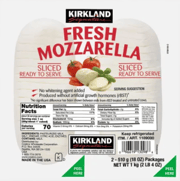Post office changes ahead as USPS confirms multiple branch closures
By
Veronica E.
- Replies 0
For many Americans, the local post office is more than just a place to send mail—it’s a trusted part of daily life.
Whether it’s picking up stamps, mailing a package, or exchanging a friendly hello with the clerk behind the counter, these familiar spots are part of the fabric of a community.
But now, a wave of changes is set to affect customers across several states.
The United States Postal Service (USPS) has announced it will be closing dozens of smaller postal counters, known as Contract Postal Units (CPUs).
Here’s a closer look at where closures are happening, why they’re taking place, and what it could mean for you.

CPUs are postal counters located inside businesses like grocery stores, pharmacies, or small shops.
They aren’t full-service post offices, but they make it easy to buy stamps, ship packages, or handle everyday mailing tasks while running errands.
For older adults, rural residents, and those without easy transportation, CPUs are often a convenient lifeline.
By the end of September, however, multiple CPUs in North Dakota, South Dakota, California, and Arizona will be shutting down.
According to USPS, the move is part of a broader plan to “serve our communities with efficient and reliable access to retail services.”
In practical terms, that means consolidating operations and keeping only the nearby full-service post offices open.
Some locations that will be affected include:
Bismarck, North Dakota
Sioux Falls, South Dakota
Phoenix, Arizona
California
USPS leaders say the closures are tied to efficiency, but the full picture involves several long-standing challenges:
Together, these pressures have forced USPS to make tough choices about where to maintain retail services.
For those who rely on CPUs, the closures could mean longer drives, longer wait times, and less convenient access to services.
That can be especially difficult for older adults, individuals with mobility issues, or families balancing busy schedules.
The impact isn’t just logistical—it’s also social.
For many, a local CPU is more than a counter; it’s a gathering point, a place to see neighbors, and a source of friendly interaction in the community.
This isn’t the first time USPS has announced cutbacks, and it likely won’t be the last.
As more communication shifts online and operating costs climb, the agency continues to face financial strain.
Yet for millions of Americans—especially those over 60—the post office remains essential for receiving medication, staying in touch with family, and keeping traditions like mailing cards alive.
Read next: Scammers are posing as USPS—here’s how to spot the warning signs

Are you affected by one of these closures? Do you have memories of your local post office or stories about how you rely on USPS today? Share your thoughts in the comments—we’d love to hear from you.
Whether it’s picking up stamps, mailing a package, or exchanging a friendly hello with the clerk behind the counter, these familiar spots are part of the fabric of a community.
But now, a wave of changes is set to affect customers across several states.
The United States Postal Service (USPS) has announced it will be closing dozens of smaller postal counters, known as Contract Postal Units (CPUs).
Here’s a closer look at where closures are happening, why they’re taking place, and what it could mean for you.

USPS is closing several community-based postal counters this month, leaving many residents with fewer convenient options for mailing and shipping. Image Source: Pexels / Ekaterina Belinskaya.
What are CPUs—and why do they matter?
CPUs are postal counters located inside businesses like grocery stores, pharmacies, or small shops.
They aren’t full-service post offices, but they make it easy to buy stamps, ship packages, or handle everyday mailing tasks while running errands.
For older adults, rural residents, and those without easy transportation, CPUs are often a convenient lifeline.
By the end of September, however, multiple CPUs in North Dakota, South Dakota, California, and Arizona will be shutting down.
According to USPS, the move is part of a broader plan to “serve our communities with efficient and reliable access to retail services.”
In practical terms, that means consolidating operations and keeping only the nearby full-service post offices open.
Also read: USPS leadership change draws attention amid questions about future service
Where are the closures happening?
Some locations that will be affected include:
Bismarck, North Dakota
- Three Fareway grocery stores on North 11th Street, South Washington, and West Turnpike Avenue.
Sioux Falls, South Dakota
- Hy-Vee stores on South Sycamore Avenue, South Marion Road, South Minnesota Avenue, East 10th Street, and South Louise Avenue.
- Lewis Drug stores on Phillips Avenue, East 10th Street, West 12th Street, South Minnesota Avenue, East 26th Street, West 41st Street, East Madison Street, South Louise Avenue, and South Ellis Road.
Phoenix, Arizona
- Several small businesses hosting CPUs, though final closure details are still being determined.
California
- Multiple CPUs are scheduled to close, but locations have not been widely released.
All closures are expected to take effect by September 30.Also read: How the 2025 USPS rate hikes could impact your shipping costs
Why is the USPS closing CPUs?
USPS leaders say the closures are tied to efficiency, but the full picture involves several long-standing challenges:
- Rising lease costs: With nearly 31,000 retail centers nationwide, USPS is struggling with higher rents and expiring property agreements.
- Counterfeit postage: Fake stamps are a billion-dollar problem, costing the agency both time and money.
- Federal mandates: Congressional requirements drain $6 to $11 billion annually from USPS operations.
- Regulatory challenges: Postmaster General Louis DeJoy has cited Postal Regulatory Commission rules as causing over $50 billion in losses.
Together, these pressures have forced USPS to make tough choices about where to maintain retail services.
Also read: USPS plans changes to improve efficiency, with potential effects on mail delivery
What this means for customers
For those who rely on CPUs, the closures could mean longer drives, longer wait times, and less convenient access to services.
That can be especially difficult for older adults, individuals with mobility issues, or families balancing busy schedules.
The impact isn’t just logistical—it’s also social.
For many, a local CPU is more than a counter; it’s a gathering point, a place to see neighbors, and a source of friendly interaction in the community.
Also read: Think twice before opening that package—USPS flags major privacy risk
How you can prepare
- Check your local branch: Call ahead or visit the USPS website to confirm if your CPU is closing.
- Plan ahead: Expect longer lines at post offices—especially during the holiday mailing season.
- Use online tools: Services like USPS.com let you buy stamps, schedule pickups, and track packages from home.
- Share your concerns: Contact your local representatives if these closures will impact your community.
Also read: Are mysterious packages showing up at your door? Here’s what USPS wants you to be aware of
A changing postal service
This isn’t the first time USPS has announced cutbacks, and it likely won’t be the last.
As more communication shifts online and operating costs climb, the agency continues to face financial strain.
Yet for millions of Americans—especially those over 60—the post office remains essential for receiving medication, staying in touch with family, and keeping traditions like mailing cards alive.
Read next: Scammers are posing as USPS—here’s how to spot the warning signs
Key Takeaways
- USPS is closing more than 20 Contract Postal Units (CPUs) across North Dakota, South Dakota, California, and Arizona by September 30.
- Affected sites include multiple Fareway, Hy-Vee, and Lewis Drug stores, along with several small businesses and California locations still being finalized.
- USPS leaders say the closures are tied to efficiency, but rising rents, counterfeit postage, costly federal mandates, and regulatory challenges are also factors.
- Customers who relied on CPUs may face longer wait times, fewer nearby options, and added hardship—especially in rural or older communities.
Are you affected by one of these closures? Do you have memories of your local post office or stories about how you rely on USPS today? Share your thoughts in the comments—we’d love to hear from you.






